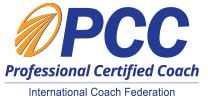Even the smartest, most capable teams can hit a wall. Deadlines slip. Communication breaks down. Meetings feel… pointless.
What’s going on?
According to Patrick Lencioni’s The Five Dysfunctions of a Team, it’s usually not about what the team is doing – it’s about how they’re working together. And if you’re not careful, these five hidden dysfunctions can quietly destroy team performance.
Let’s break them down and the actionable steps to overcome them.
1. Absence of Trust
At the root of a dysfunctional team lies a lack of trust. Team members are unwilling to be vulnerable with one another and do not feel safe admitting mistakes, asking for help, or sharing concerns.
The Fix:
- Trust builds when leaders create an environment of psychological safety by modeling vulnerability and openness.
- High-performing teams are encouraged to share personal stories, own up to their weaknesses, and are vulnerable with one another.
- Normalize imperfection by celebrating learning over perfection.
2. Fear of Conflict
When trust is missing, teams often avoid hard conversations. But it’s not the presence of conflict that’s the problem—it’s the absence of healthy, productive debate. Without open disagreement, teams fall into artificial harmony, where problems simmer just below the surface.
The Fix:
- Normalize conflict as a sign of engagement.
- Establish ground rules for respectful debates and invite diverse opinions.
- Disagreement (done right) leads to better decisions and stronger relationships.
3. Lack of Commitment
Unresolved conflict, ambiguity, and unclear direction prevents full buy-in. Teams without clear and open debate are unlikely to be fully on board with the outcomes.
The Fix:
- Ensure everyone has a voice before decisions are made.
- Encourage discussion, then clarify decisions so everyone is aligned.
- Clarity, even without consensus, builds commitment.
4. Avoidance of Accountability
Without commitment, it’s hard for team members to hold each other accountable. People hesitate to call out peers or confront underperformance, leading to declining standards and quiet resentment.
The Fix:
- Make accountability peer-driven, not just leader-driven.
- Publicly commit to goals and standards and regularly review progress as a group.
- Praise team members who hold others accountable with courage and care.
5. Inattention to Results
When individuals prioritize personal success, ego-driven goals, or comfort over team outcomes, results suffer.
The Fix:
- Reinforce shared goals above individual ones.
- Celebrate team wins and measure success at the group level.
These five dysfunctions undermine team performance.
However, they are fixable.
Lencioni’s model offers leaders a framework to improve team cohesion and performance. By actively cultivating trust, encouraging healthy conflict, securing commitment, promoting accountability, and focusing on shared results, any team can shift from dysfunctional to dynamic.



